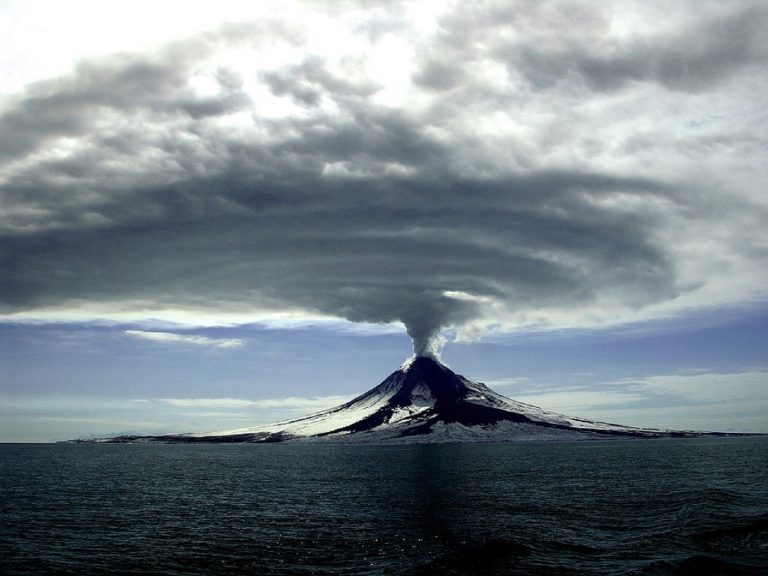
The volcano is one of the most complex geological occurrences in the natural world. With the power to blast cascades of gas through an angry, ashen sky; to fire streams of molten lava and leave paths of smouldering destruction in the wake of its scorching tide; to breathe life back into the Earth and stand as a pillar of strength when it shakes to its very core; the volcano is undoubtedly one of the most awesome forces at work in the natural environment.
“Volcanoes are a spectacular and dangerous embodiment of the dynamic nature of our planet,” says Oliver Lamb, PhD student at the Volcanology Research Group at University of Liverpool’s School of Environmental Sciences. “An estimated 800 million people now live within 100km of an active volcano around the world, and this figure continues to increase every year.”
And yet, in spite of its potential for destruction, the volcano is a landform mankind simply could not live without. The ability to feed precious nutrients to our soils, for example, helps fertilise the Earth, creating the perfect conditions for farmers to grow crops. Some volcanoes even form crucial parts of the Earth’s tectonic plates, the absence of which would mean arid land could not be revived, and the forces of weathering by water, wind and ice would eventually consume it, leaving Earth a genuine ‘water world’.

Image courtesy of the University of Liverpool
While the benefits of the volcano are invaluable, the dangers are devastating and entirely unpredictable. And it is for this reason “that the need for a better understanding of volcanoes and their behaviour is as great as ever,” says Oliver Lamb.
“Volcanoes are complex beasts: no two volcanoes behave exactly the same,” Oliver continues. “Indeed, a single volcano might display completely different eruptive behaviour within a human lifetime. This presents a huge challenge for scientists responsible for monitoring volcanoes around the world.”
The Volcanology Group at the University of Liverpool is actively involved in this sort of field work, playing a major part in the monitoring of volcanoes on a global scale. Using a wide range of intricate geophysical monitoring equipment, such as seismometers, channel digitizers, infrasound microphones and other complex gadgets, scientists are able to constrain fundamental magmatic and volcanic processes, as well as conduct the pioneering studies that provide answers to signals behind magma transport and eruptions through the Earth’s surface.
“While we may be able to detect the signs that magma is rising inside a volcano, there is still no reliable means for determining whether the magma will reach the surface, and if it does, how violent and prolonged the eruption will be,” Oliver adds.

Image courtesy of the University of Liverpool
As one of the most innovative and interdisciplinary volcanology research groups of its kind in Europe, Liverpool’s Volcanology Group is doing everything it can to help the world understand the inner workings of the volcano.
Earlier this year, for example, an experienced team of volcanologists from the University of Liverpool and the Ludwig Maximilian University of Munich helped develop a brand new method to assess the impact of volcanic ash on jet engines.
“The atmospheric spreading of ash from prolonged eruptions can bring widespread disruption to air travel on a continental scale; something highlighted by the 2010 eruption of Eyjafjallajökull in Iceland,” Oliver notes.
In their most recent study, researchers from the university examined volcanic ash samples from nine different variants, allowing them to identify exactly how its chemical composition affects its behaviour when it melts at jet engine temperatures, which can range between a scorching 1100°C and 2000°C.

Image courtesy of the University of Liverpool
While there still remains little proven knowledge on the subject, volcanic ash is universally understood to be a potentially fatal hazard for all airborne vehicles, largely due to its potential to melt and glue to the inside of engine turbines. According to researchers, this can be particularly problematic if it seeps into the cooling system.
“Our experiments are the first study to test the conditions for which ash can melt using chemical criteria,” says Professor Yan Lavallée, a leading volcanologist at Liverpool’s School of Environmental Sciences. “Through our experiments we were able to develop a model to predict the melting and sticking conditions of different volcanic ash particles.
“We are able to show that volcanic ash may melt and stick more readily inside jet engines, and that the common use of sand or dust is wholly inadequate for the prediction of the behaviour of volcanic ash.
“With the current level of aerial traffic, understanding the generation, transport and impact of volcanic ash becomes a priority and too much is at stake to overlook the role of volcanic ash on aviation.”
With the impact of ground breaking research such as this, researchers from the University of Liverpool are not only helping the world get to grips with one of the most complex forces at work in the natural world, they are also helping save lives on a truly global scale.
________________________________________________________________
This article is sponsored by the School of Environmental Sciences at the University of Liverpool, an institution entirely committed to and passionate about the study of planet Earth. The School is split into two departments: Department of Earth, Ocean and Ecological Sciences and the Department of Geography and Planning, both of which deliver high-quality programmes across the disciplines of Geology & Geophysics, Ocean Science, Ecology & Marine Biology, Geography (Human and Physical), Planning (Civic Design) and Environmental Science. Graduates of the School of Environmental Science at the University of Liverpool don’t just work for the good of humanity, but for the good of the planet.







